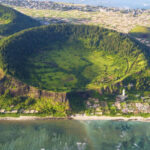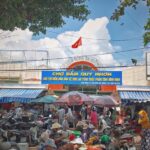With a five-day break, VnExpress suggests some itineraries for travelers. Below are some beach destinations across the country with favorable weather conditions. The cost depends on the location and additional services, ranging from 5 to 8 million VND per person.
Quang Ninh – Co To Island
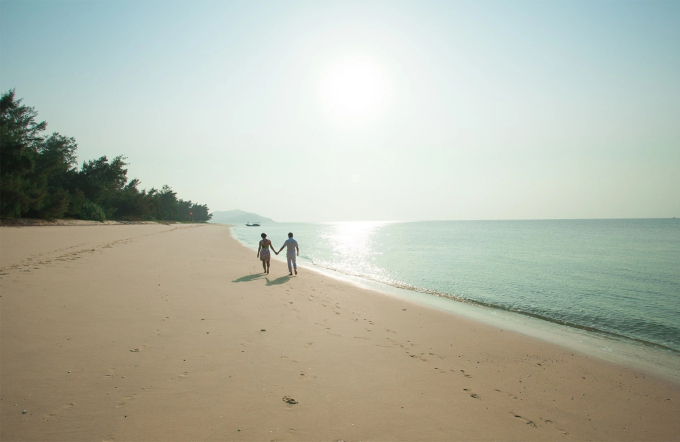
Beach on Co To Con Island. Photo: Trung Jones
Suggested itinerary: 3 days and 2 nights (from Hanoi)
Due to the lengthy and potentially nauseating journey, it is recommended to stay on Co To Island for at least two nights. In recent years, Co To has become a popular beach destination in Northern Vietnam, attracting many tourists. It boasts crystal-clear beaches and is developing its accommodation and entertainment options.
Attractions on Co To include Hong Van Beach (on the main Co To Island) or beaches on the smaller Co To Island, the Love Road, Co To Park, the Rock Beach, My Bridge, the Wave-Watching Hill, and the lighthouse.
Estimated cost per person: 4-5 million VND
– Transportation from Hanoi: 200,000 to 350,000 VND one way/person. For travelers from the South, add transportation costs.
– High-speed boat ticket to the island: 250,000 to 400,000 VND one way/person.
– Accommodation: ranging from 200,000 to 600,000 VND per night/person
– Food and drinks: 1-2 million VND
– Other expenses: 1 million VND
Hoi An – Cham Island
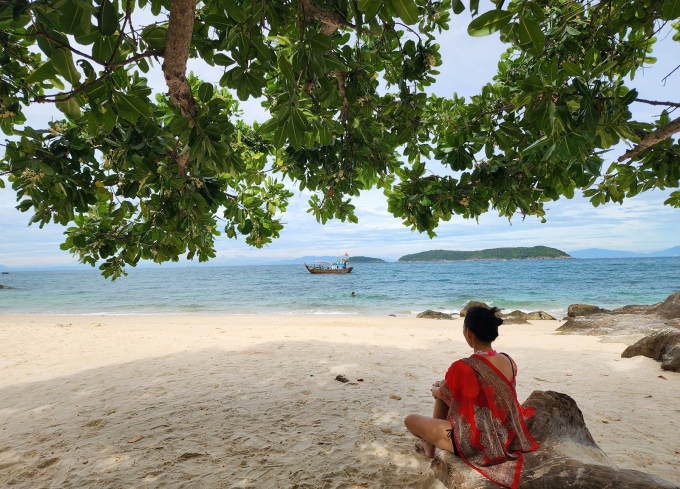
Bai Xep Beach on Cham Island. Photo: Duy Tran
Suggested itinerary: 4 days and 3 nights
It is recommended to spend 1-2 days on Cham Island, enjoying the beaches, snorkeling to see coral reefs, visiting ancient temples, drinking from the ancient Cham well, and savoring seafood delights. Day tours to Cham Island usually end before 5 PM, while the 2-day tours finish in the early afternoon of the following day.
In addition to the island tour, travelers can stroll through the ancient town of Hoi An, visit An Bang Beach, the Tra Que vegetable village, shop and dine in the city’s central markets, and explore the Linh Ung Pagoda on the Son Tra Peninsula.
Estimated cost per person: 8 million VND
– Round-trip airfare to Da Nang from Hanoi or Ho Chi Minh City: approximately 4 million VND/person.
– Accommodation in Hoi An: from 500,000 VND per night
– Cham Island tour price from Hoi An: ranging from 500,000 to 1.2 million VND (1 or 2 days)
– Food and transportation expenses outside the tour: 2 million VND
Quang Ngai – Ly Son Island

Ly Son Island as seen from Thoi Loi Mountain. Photo: Che Van Hien
Suggested itinerary: 4 days and 3 nights
It is recommended to spend at least 2 nights on Ly Son Island, with one night on the smaller island and 1-2 nights on the main island. The smaller island is less crowded and offers a more pristine and tranquil experience. Notable attractions on the main island include Thoi Loi peak, the garlic fields, Hang Cave, Gate of the Arch, Hang Pagoda, Duc Pagoda, and Am Linh Temple. The smaller island features Mu Cu Hill, the mural village, and Bai Ngang (also known as Vietnam’s Maldives).
Travelers can opt to stay an extra night at My Khe Beach (Quang Ngai) and visit some historical sites in Quang Ngai or Quang Nam provinces.
Estimated cost per person: 7-8 million VND
– Round-trip airfare to Chu Lai or Da Nang from Hanoi or Ho Chi Minh City: approximately 4 million VND/person.
– Accommodation on Ly Son or in Quang Ngai: from 500,000 VND per night
– High-speed boat from Sa Ky Port to Ly Son: 150,000 to 200,000 VND one way/person
– Food expenses: 1.5 to 2 million VND
Binh Dinh – Cu Lao Xanh Island
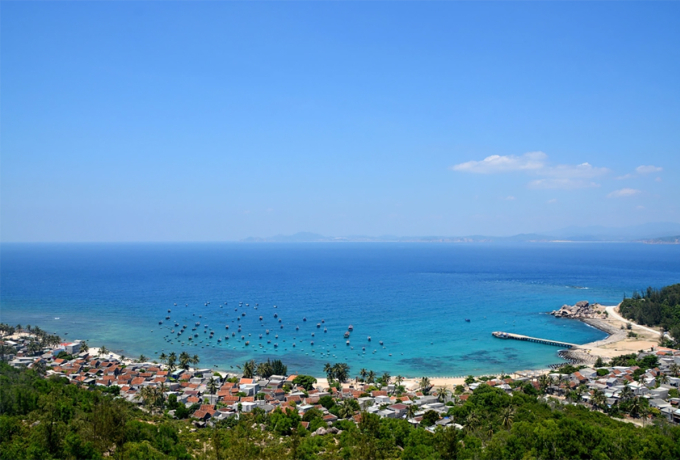
Cu Lao Xanh Island from above. Photo: Tien Hung
Suggested itinerary: 4 days and 3 nights
The recommended stay on Cu Lao Xanh Island is 2 days and 1 night. Also known as Van Phi Island, it is located southeast of Quy Nhon City. There are two daily trips to and from the island: departing at 7:30 AM and 1:30 PM from Quy Nhon, and returning at 7:00 AM and 3:00 PM from the island. Attractions on the island include the lighthouse, the Flagpole of the Fatherland, the Small Beach, Bai Dong, Thao Nguyen Rock Beach, the pier, and the wave-breaking embankment.
Cu Lao Xanh remains relatively untouched and less crowded compared to other islands. It has only recently started accommodating overnight stays, so booking a tour is advisable for safety reasons. The island’s accommodations are mostly basic guesthouses.
Estimated cost per person: 7-8 million VND
– Round-trip airfare to Quy Nhon from Hanoi or Ho Chi Minh City: 3-4 million VND/person.
– Accommodation in Quy Nhon: from 500,000 VND per night
– 2-day Quy Nhon – Cu Lao Xanh tour: 1.5 million VND
– Food and transportation expenses outside the tour:
Binh Thuan – Phu Quy Island
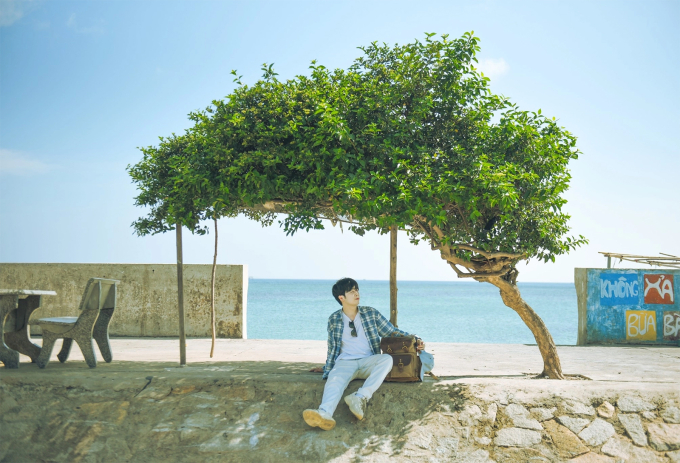
The Lonely Tree on Phu Quy Island. Photo: Sang Dang
Suggested itinerary: 3 days and 2 nights or 4 days and 3 nights (from Ho Chi Minh City)
It is recommended to spend at least 2 nights on Phu Quy Island, with the remaining time enjoying Mui Ne or nearby areas. Must-visit attractions include the Gulf of Triêu Dương, Ganh Hang, Cao Cat Peak, the wind farm, Lang Duong Fish Lake, Long Hai Fish Market, and the Lonely Tree. Other activities include island tours and scuba diving to see coral reefs.
In addition to the island tour, travelers can stay an extra night in Mui Ne, experiencing the fish sauce museum, enjoying hot pot, visiting Bau Trang, and partaking in sand sports. Note: The high-speed boat ride takes about 2 hours, so those prone to seasickness should prepare accordingly.
Estimated cost per person: from 5 million VND
– Transportation: 1 million VND (from Ho Chi Minh City), with additional costs for travelers from the North.
– Accommodation on Phu Quy Island or in Mui Ne: from 350,000 VND per night.
– High-speed boat to the island: from 250,000 to 400,000 VND one way/person
– Food expenses: 1-2 million VND per person. Tam Anh
“An Early Morning Seafood Extravaganza: Exploring the Bustling Night Market of Ly Son Island”
The island offers a unique and captivating experience: a visit to the nocturnal fish market, offering an authentic insight into the lives of local fishermen. Here, visitors not only witness the vibrant trade of freshly caught seafood but also immerse themselves in the lively and humble atmosphere of the market, a true reflection of the local fishing community’s way of life.



























